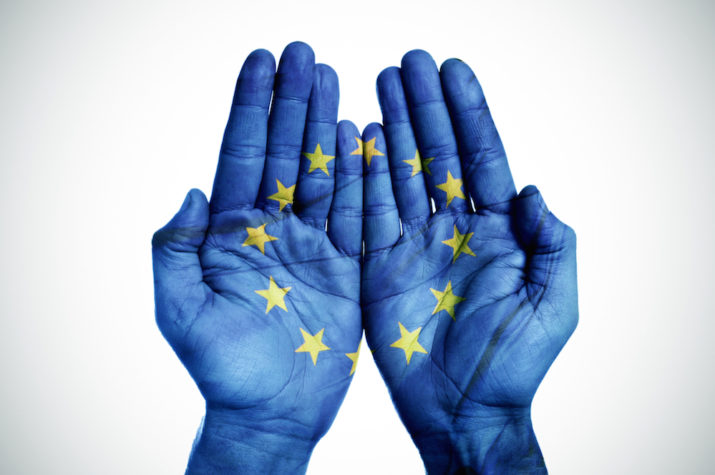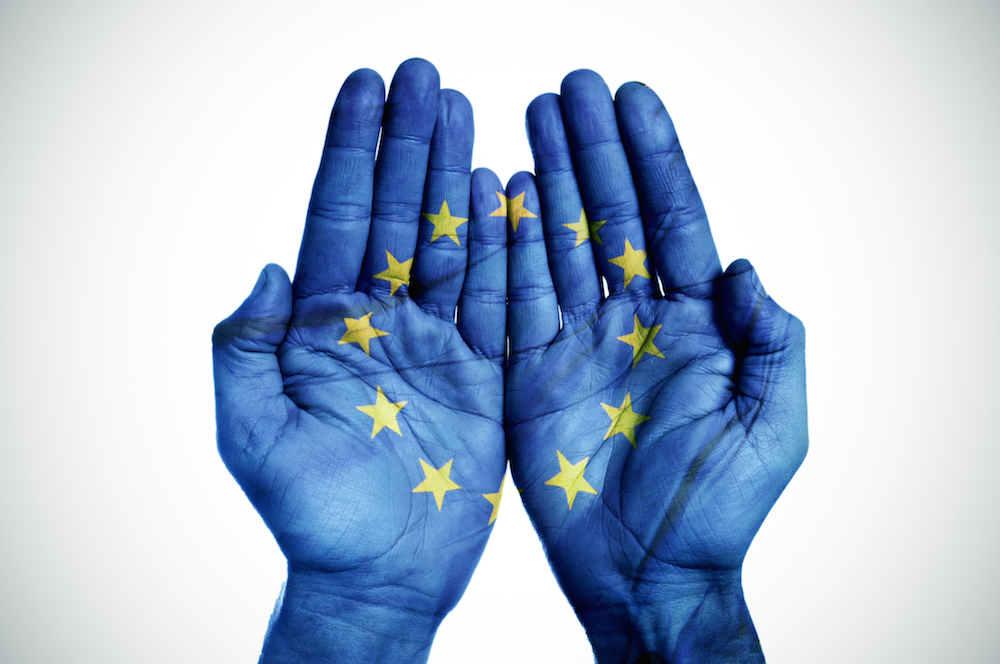
Good Europeans or Poor Relations? Transnational Minority Activism in the Age of European Integration

This is part of our special feature, Diversity, Security, Mobility: Challenges for Eastern Europe.
Almost one hundred years have passed since the first introduction of an international minority rights regime onto the European political agenda. The approaching centenary of the Polish Minority Treaty (June 1919; the first treaty in the series), is perhaps not so much a cause for celebration as an opportunity to take stock—after all, despite notable advances in minority protection in Europe, minority rights remain a highly divisive subject.
The well-documented “rise, fall and revival” of minority rights during the turbulent twentieth century can be subdivided into three corresponding periods: post-World War One, post-World War Two, and post-Cold War. The first period saw both the introduction of an international minority rights regime under the auspices of the League of Nations (LoN) and its collapse, along with the League itself and the whole international system, just two decades later.
The second period was characterized by a radical shift of focus from the “tarnished by association” minority rights toward the all-encompassing universal human rights, whilst expecting ethnic allegiances to disappear in the on-going march toward modernization and Europeanization.
The third period witnessed the—tentative—return of minority rights to the international agenda following both the rise of European ethno-regionalist movements, and, particularly, the collapse of the Socialist Bloc and accompanying ethnic violence in the late 1980s. Although within the EU the politics of equality were supplemented with the politics of inclusion and recognition, with the declared aim of both protecting and empowering minorities within its borders, the attitude toward minority rights activism remains highly ambivalent among politicians, lawmakers and scholars alike.
While both minority rights and advocacy for such rights for and on behalf of various ethnic groups have once again become an acknowledged part of international discourse, any form of political recognition for ethnic groups themselves is still widely regarded as normatively indefensible and inimical to integration, stability, and peace. This suspicion has been especially marked, on the part of both nation-states and international organisations, when it comes to transnational ethnic activism—the one that transcends national borders seeking a universal regime of minority rights. And despite the major shifts that have occurred across social sciences since the advent of transnationalism in the 1970s, transnational ethnic activism is also curiously neglected by scholars. Elsewhere, scholars have successfully shifted the focus of attention from the nation-state as the sole significant player in the era of Europeanization and globalisation, but the only transnational aspect of ethnic relations that has been addressed, until now, both by scholarship and by the European “soft” legislation is kin-state politics, largely viewed through the prism of security.
This omission is particularly puzzling if one considers the history of two distinct yet inter-related transnational minority organizations that came to life in the twentieth century in response to the changing international environment. The first is the European Nationalities Congress (ENC), which was established in Geneva in 1925 and met annually until 1938, bringing together over 200 delegates drawn from organizations speaking for 34 ethno-cultural minorities in 15 European states. The early historical studies of the ENC viewed it in largely negative terms, not least because during the 1930s, it was subverted by the Nazi currents amongst German minorities, ultimately becoming an instrument of Hitler’s foreign policy. More recent studies of the organization during its early years (1925-32), however, point to an organization genuinely committed to achieving peaceful coexistence between ethnic groups, stable states and a united Europe. In its original incarnation, the ENC anticipated many of the ideals of the second organisation, the Federal Union of European Nationalities (FUEN), which during this course of its history has repeatedly claimed to be the successor of the ENC.
A closer look at these two transnational coalition movements casts the history of minority rights discourse and practice in Europe over the past century in a light somewhat different to the widely-accepted narrative of the “fall, rise and revival.” Rather than driven by narrow nationalism, the founding of both organizations was arguably propelled by a genuine desire to reconcile tensions between national self-determination and state sovereignty, individual and collective rights and—in a broader philosophical sense—the particular and the universal.
The founders of both organizations embraced the idea of Europe as a means to such reconciliation, hoping to escape the arbitrariness of the nation-state by directly contributing to debates at the supranational level. The ENC was directly inspired by the new opportunity structures arising from the minority treaties under the auspices of the LoN, which provided the focus and institutional framework for the activism pursued through the ENC. It is hardly a coincidence that FUEN, which grew out of the European federalist movement, was established in 1949 in direct response to the creation of the Council of Europe (CoE).
The ENC was formed with a view to create a forum within which all European national minorities could explore their common interests, share experiences and develop perspectives on minority rights “from below.” One of its founders, Baltic German Paul Schiemann vociferously denounced Nazism, seeing in it a movement completely at odds with his own advocacy of limiting the absolute sovereignty of states in the interests of building a future “United States of Europe.” Nobody, according to Schiemann, was as committed to the European project as national minorities, which he described as “good Europeans because of their fate” (Hiden 2004: 225).
In a strikingly similar fashion, the post-war minorities and federalists were unanimous in professing their dedication to the idea of European unity. In the words of the FUEN first Secretary General Breton Joseph Martray: “Our aim is not to divide Europe still further, but to create a united Europe on federal principles. In this task, the small people have a special part to play, as they are more sensitive than the great centralised states to the idea of European Unity” (Kühl 2000: 25).
Accordingly, Martray and his colleagues began to lobby the newly-formed CoE, seeking consultative status and the addition of specific minority rights clauses to the 1950 European Convention of Human Rights. From 1951, FUEN petitioned CoE for the creation of the European Court of Justice that would “settle disputes between states and their national minorities” and would admit not just states, but also “individuals, groups, and associations, whether belonging to minorities or not.”[1]
Around the same time, FUEN also put forward a proposal on creation of a permanent Sub-Commission on European nationalities that would be tasked with monitoring interethnic relations and submitting an annual report to the Consultative (now—Parliamentary) Assembly of CoE. A similar proposal was put forward in 1956 by a Swedish deputy, who suggested to create a sub-committee on minorities of the Legal Committee of the Assembly. The resultant Sub-Committee on National Minorities submitted a report to the Assembly in 1957, leading to a Resolution of the Assembly in favour of the “collective interests” of minorities—to the dismay of the Committee of Ministers (Alcock 2000). Constantly encountering hostility towards the very idea of minority collective rights on the part of nation-states (especially considering the new rise of regional movements), the Sub-Committee continued to grapple with minority issues without notable success. Overall, its experience is highly reminiscent of the one of the Adatci Commission at the LoN in 1928-1929, which, upon the initiative of Gustav Stresemann, was looking—ultimately unsuccessfully—into the ways of improving minority protection (Housden 2014). It is highly improbable that FUEN had had any actual input in the creation of either the European Court, or the Sub-Committee, although the organization certainly deserves credit for its visionary aspirations. However, those developments, along with a small grant (CHF 300,000) awarded by CoE for the study on national minorities, led FUEN’s leaders to believe that their lobbying efforts were altogether more successful on the “European front” than at the United Nations (where, in 1955, FUEN also applied for a consultative status).[ii]
FUEN’s thirst for official recognition at times came at a price to its ideological integrity—upon its conception, the organization made no distinction between “national minorities” or “ethnic groups,” avowing to work for “any small people actually bound to a national state by minority circumstances.” However, following the creation of the Sub-Committee on National Minorities, it took a contentious decision to create two corresponding sections of its members at the 9th Congress in 1959. In the letter sent to CoE on 10th August 1959, FUEN’s Secretary General Povl Skadegård writes that “…thus the FUEN has now technically ensured that matters presented to the Council will always be within the competence of its Sub-Committee…. hoping that this modified construction of the FUEN will effect a precipitated decision as to whether the consultative status can be granted to it.” This tactical move did not impress CoE, but created a long-lasting rift within FUEN’s membership.
Overall, though, the liberally-minded leaders of both the ENC and FUEN regarded the principles of universalism and generality as the cornerstones of minority rights movement. The ENC, for example, had very strict rules of engagement: discussion was limited to general principles of concern to all minorities; participants were required to declare their loyalty to their state of residence; and any accusations directed at individual governments were prohibited. In a corresponding vein, FUEN pledged to defend the rights of all European nationalities, whilst stressing that minority rights “form part of incontestable human rights” and such are not particular.
FUEN’s insistence on the generality and universality of minority rights went against the official maxim that these rights are impossible to interpret in universal terms, with the situation of each minority being allegedly different and protective measures needing to be determined on an ad hoc basis. As argued by Secretary General at the FUEN’s 6th Congress in 1956, “The interests and natural rights of all categories of nationalities are in the principle the same and it is unimportant whether they are in danger or not, whether they live in their home country or not, and whether they belong to a communist state or not.”
Throughout its existence, FUEN insisted that in its field of activities, “there is no Iron Curtain;” apart from sending reports of its congresses to all European governments, including those of socialist countries, the organization consistently showed strong interest in the fate of minorities within the Socialist Bloc (being, for example, a long-term advocate of the rights of Crimean Tartars). These endeavours led to accusations in pro-communist sympathies; overall, FUEN was often caught in the cross-hairs of Cold War propaganda. At the time of the 6th FUEN Congress in 1956 in Austria, two local newspapers questioned the organization’s financial independence, intimating that it served as a cover for “former Nazis and Fascists.” In the end, neither of the accusations stuck.
The very fact that FUEN survived through the difficult post-war decades points to the continuous aspirations of minority communities to greater recognition and self-determination, and runs counter to the accepted narrative of the post-war “fall” of minority activism. Nevertheless, FUEN existed at the very margins of European politics, plagued by financial difficulties and the lack of professionalism: by the end of the 1980s, it could count on no more than 25 member organizations speaking on behalf of minority communities in Western Europe. When the long-cherished (and hard-fought for) goal of consultative status was finally realised in January 1989, FUEN had by this point, an “old and tired face” (Kühl 2000: 106).
Just a few months later, however, FUEN’s fortunes were boosted by the demise of communist regimes in Central and Eastern Europe; the consequent revival of minority claims within the region created new possibilities for contacts across the former West-East divide, doubling FUEN’s membership within a decade. For many nascent Eastern European minority communities, FUEN became a first point of contact with the wider world; ironically, after having been shunned by the EU institutions for decades, FUEN was now also perceived, by national governments in Eastern Europe, as a kind of EU proxy. Consequently, FUEN’s agenda and mandate were significantly widened, reconfiguring its relationship with European structures: a fringe organization representing peripheral ethnic groups was transformed into a pan-European umbrella organization for minorities.
Nowadays, FUEN is arguably the most prominent organization of its kind in contemporary Europe, encompassing 90 member organizations in 32 countries. It has a consultative status at CoE and at the United Nations, as well as being a participant in the European Fundamental Rights Platform—in short, it is seemingly embedded within the structures of the democratic and supranational European project. At the same time, many would still choose to characterise it as marginal, and its effectiveness in representing European minorities invites further scrutiny. The other potential cause for concern, coupled with the assertive stance the Hungarian state has taken on its ethnic kin abroad, is the seemingly increasing influence of Hungarian minorities within the organisation, which over the past two decades has gradually come to replace the Danish and German minorities’ leadership.
FUEN’s latest undertaking is the ongoing European Citizens’ Initiative (ECI) to secure approval for the so-called Minority Safepack containing “a set of measures and concrete legal acts for the promotion and protection of the European minorities and the regional and minority languages.” The initiative was initially rejected by the European Commission (EC) in September 2013 on the grounds that it“falls manifestly outside the framework of the Commission’s powers to submit a proposal for a legal act of the Union.” The rejection letter also said that some of the proposed measures “might fall within the framework of the Commissions powers,” but that the Regulation on the citizens’ initiative “does not provide for the registration of part or parts of a proposed initiative.” [iii] Having commented that the fate of the Minority Safepack “demonstrates the limits to the European Citizens’ Initiative as a new instrument of direct democracy, FUEN submitted an appeal to the European Court of Justice. On 3rd February 2017, the Court delivered a judgment against the EC, holding that the decision taken by the EC in September 2013 to reject the registration was unlawful. Consequently, the EC decided to register the Initiative. Arguably being the biggest FUEN’s achievement to date, Minority Safepack initiative dominated the agenda of the FUEN 62nd Congress in Cluj-Napoca in May 2017.
But to succeed, an ECI must collect one million signatures of support (on paper and online) within 12 months, as well as crossing established thresholds (minimum number of signatories) in at least seven EU countries—arguably, a formidable task. At present, just under 50,000 signatures have been collected online, with only Romania having crossed the threshold at 36,330 signatures representing 151 percent.[iv] The experience of previous ECIs shows that a large share of signatures is collected on paper, with the whole collection process being sluggish during the first six months and accelerating towards the end. Still, with the deadline looming on 3rd April 2018, the outcome of Minority Safepack initiative seems uncertain—but should all the blame be laid at FUEN’s door?
After all, the existing mechanism of ECI attracted many criticisms in the past as overly bureaucratic and not user-friendly; only four out of 66 previously submitted initiatives were successful, with almost a third rejected as ‘inadmissible.” In fact, in September 2017 the European Commission published a proposal for the ECI rules revision aiming at “making the ECI more accessible, less burdensome and easier to use for organisers and supporters” in order to achieve “the full potential of the ECI as a tool to foster debate and participation at European level.” Notably, the proposed changes to Article 6, in clear reference to the Minority Safepack case, stipulate the possibility of a partial registration of an ECI. [v] Whether this and other proposed changes will be sufficient for bringing “the EU closer to its citizens” remains to be seen, but, in any case, they might come too late for Minority Safepack.
Overall, just as the ENC struggled for international influence in the late 1920s, FUEN plays a similarly marginal role within the EU. In both cases, this ineffectiveness can be partly attributed to a lack of resources, material and human, and internal divisions within organisations. A bigger factor, however, has arguably been an international environment. Both the ENC and FUEN were created in direct response to the opportunity structures created by the LoN and CoE respectively. However, both encountered not just deep suspicion on the part of nation-states, but also a somewhat cold and disinterested attitude on the part of the organizations that they aspired to serve.
In all fairness, the processes of European integration after 1945 provided FUEN with opportunity structures of which inter-war ENC activists could only dream. The devolution of power to regions within the supranational framework of the EU was a development formative for post-war minority activism, whilst EU institutions facilitated transnational activism by creating new arenas for interaction.
For all this, it took FUEN decades of perseverance before its efforts were finally acknowledged, and it remains under question whether European institutions are ready for more direct input from minority organisations. In a 2014 speech to mark FUEN’s 65th anniversary, its president Hans Heinrich Hansen claimed that although there are indications that FUEN’s expertise in the field is acknowledged by politicians, one cannot shake off the feeling that it is also a cause for annoyance: “We know that poor relations aren’t meant to have much of a say, and that is why we are annoying.”
At present, the longer-term sustainability of the framework of European integration appears increasingly open to question. In the midst of the current European crises, revisiting the work of the 1920s Nationalities Congress and FUEN offers a useful reminder that minorities and minority rights can and indeed must be part of the solution rather than part of the problem. But without being safely underpinned by supranational European structures, minorities’ activism invites undue influence by governments committed to defending the interests of “their own;” it is literally “up for grabs” by any interested parties. At the same time, the project of European integration risks becoming “a two-level game of states and the Union, with little room for regional and minority claims” (Keating 2004: 367).
Marina Germane is a Research Affiliate at the School of Social and Political Sciences of the University of Glasgow. This article is partly based on a larger paper, co-authored with David J Smith and Martyn Housden (forthcoming in Nations & Nationalism in 2018).
Photo: Nito | Shutterstock
References:
[1] The European Convention on Human Rights establishing the European Court of Human Rights was adopted in 1950; the European Commission of Human Rights, which was created in May 1954 for the purpose of handling applications to the Court, initially accepted only inter-state applications; the right to individual application would not become effective until July 1955 due to the resistance on the part of nation-states.
[ii] This and all following unattributed quotations related to FUEN are cited per author’s archival research (DCS-153).
[iii]Full text available at https://www.fuen.org/fileadmin/user_upload/downloads/2._Rejection_COM.pdf . Accessed 28.07. 2016.
[iv] https://ec.europa.eu/citizens-initiative/32/public/#/ Accessed on 16.11. 2017.
[v] Proposal for a Regulation of the European Parliament and of the Council on the European citizens’ initiative. European Commission: Brussels, 13.9.2017. COM (2017) 482 final 2017/0220 (COD). https://ec.europa.eu/info/law/better-regulation/initiatives/com-2017-482_en Accessed on 16.11.2017.
Alcock, A. (2000) A History of the Protection of regional Cultural Minorities in Europe. From the Edict of Nantes to the Present Day. Basingstoke: Macmillan Press.
Hiden, J. (2004) Defender of Minorities. Paul Schiemann 1876-1944. London: C. Hurst & Co.
Housden, M. 2014. On Their Own Behalf. Ewald Ammende, Europe’s National Minorities and the Campaign for Cultural Autonomy 1920-1936. Amsterdam and New York, NY: Rodopi.
Keating, M. (2004) ‘European Integration and the Nationalities Question’, Politics & Society 32 (3): 367-388.
Kühl, J. (2000) The Federal Union of European Nationalities: an outline history 1949-1999. Aabenraa: Institute for grænseregionsforskning.
Published on December 6, 2017.




